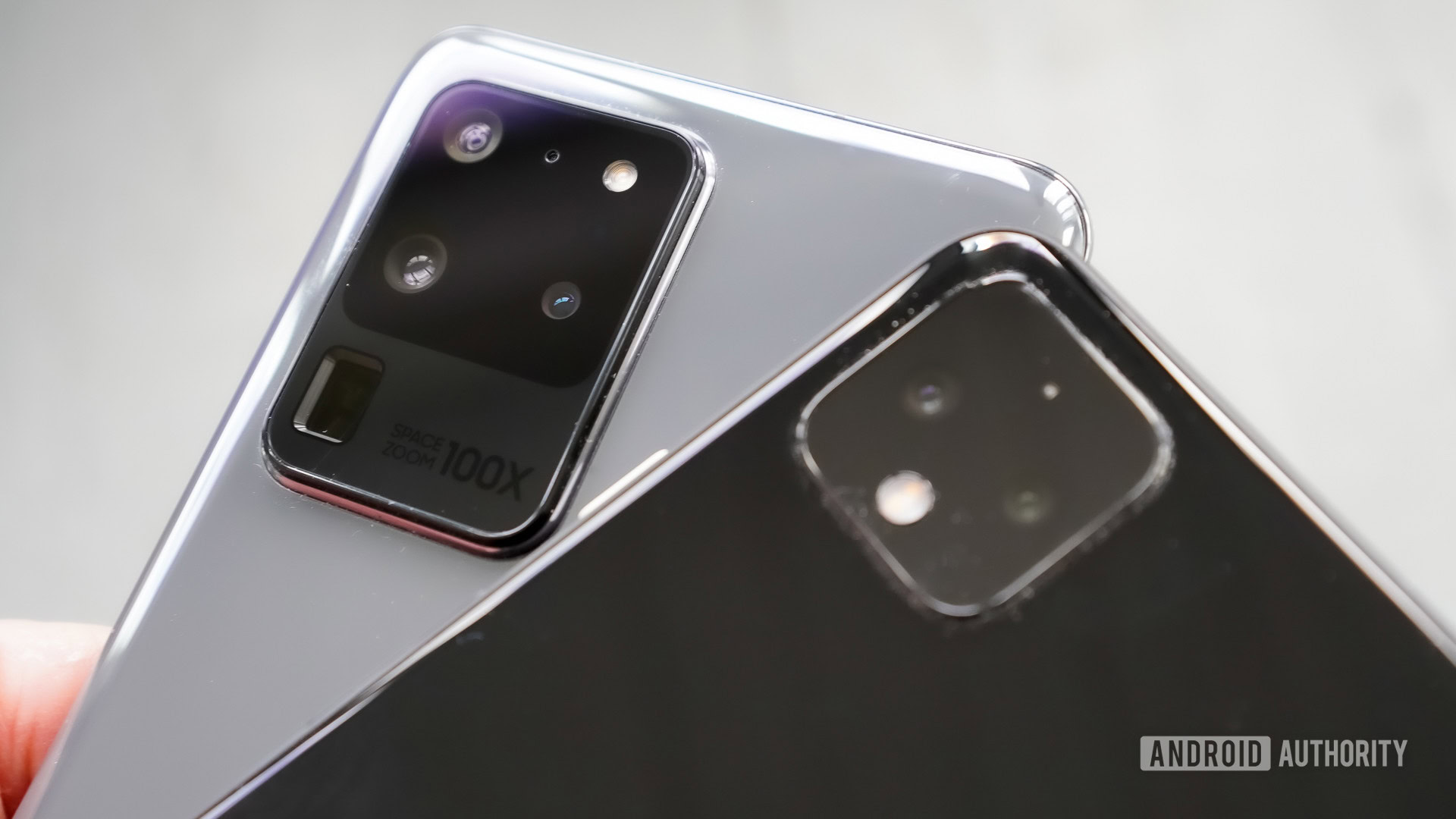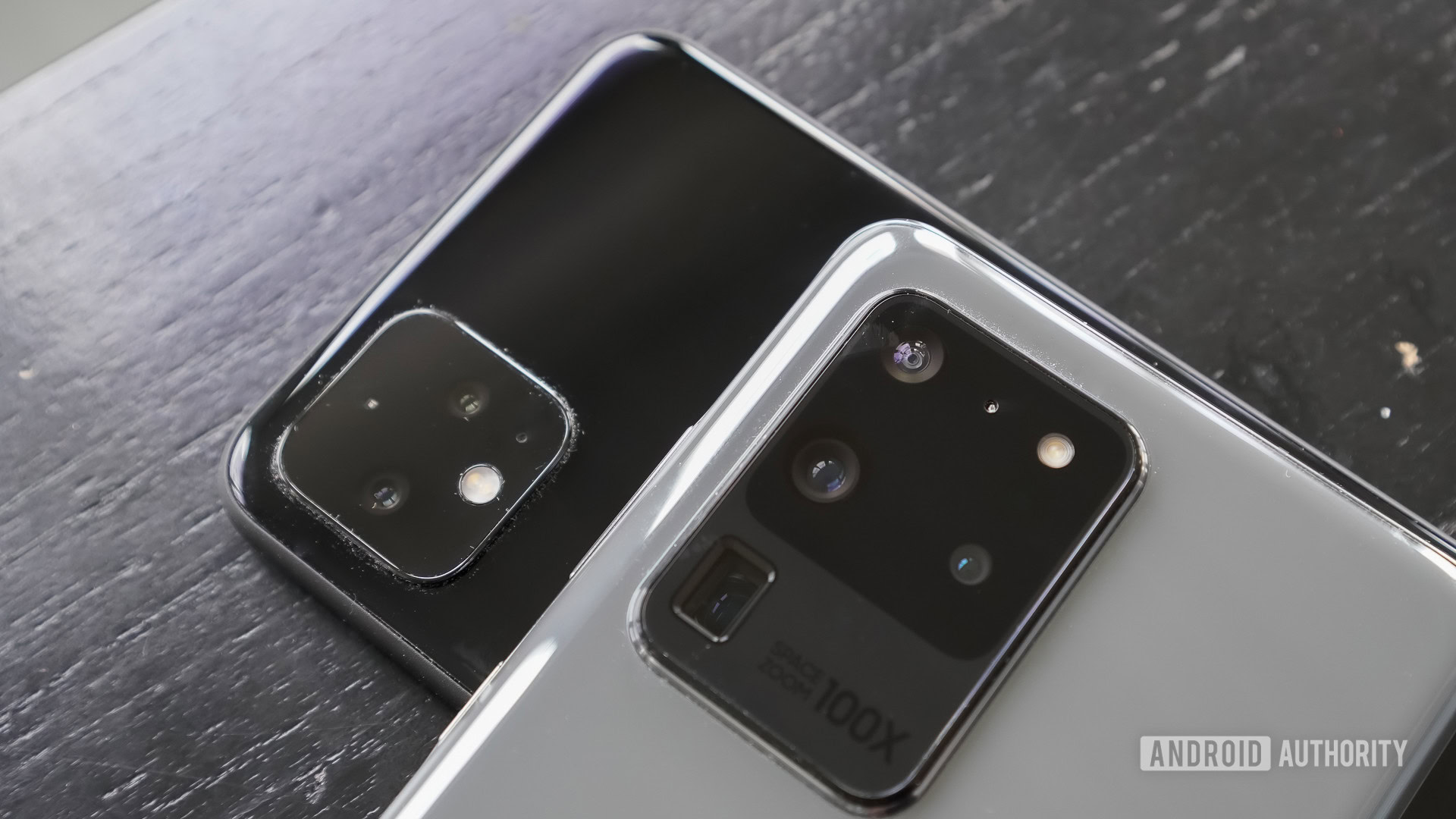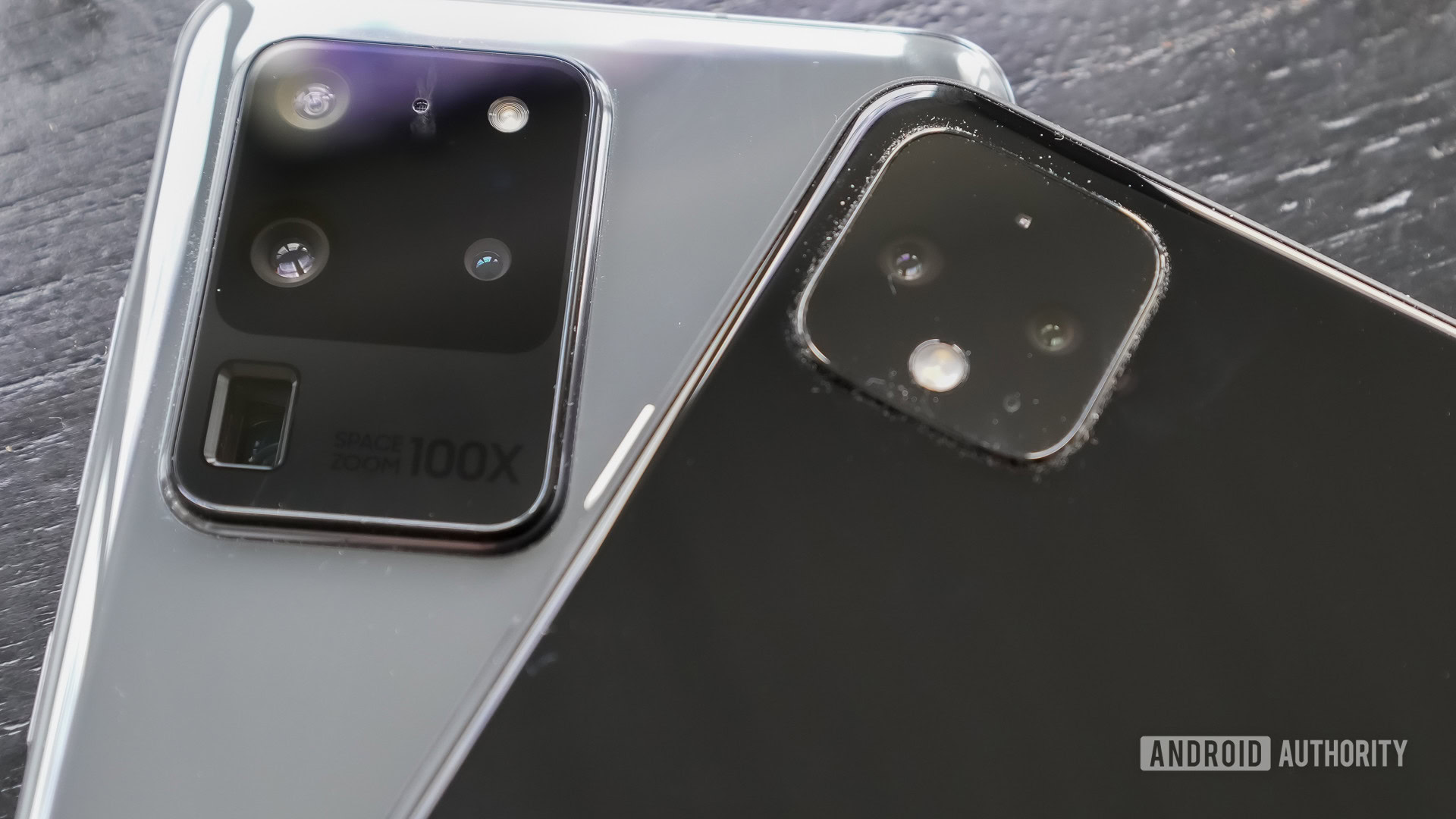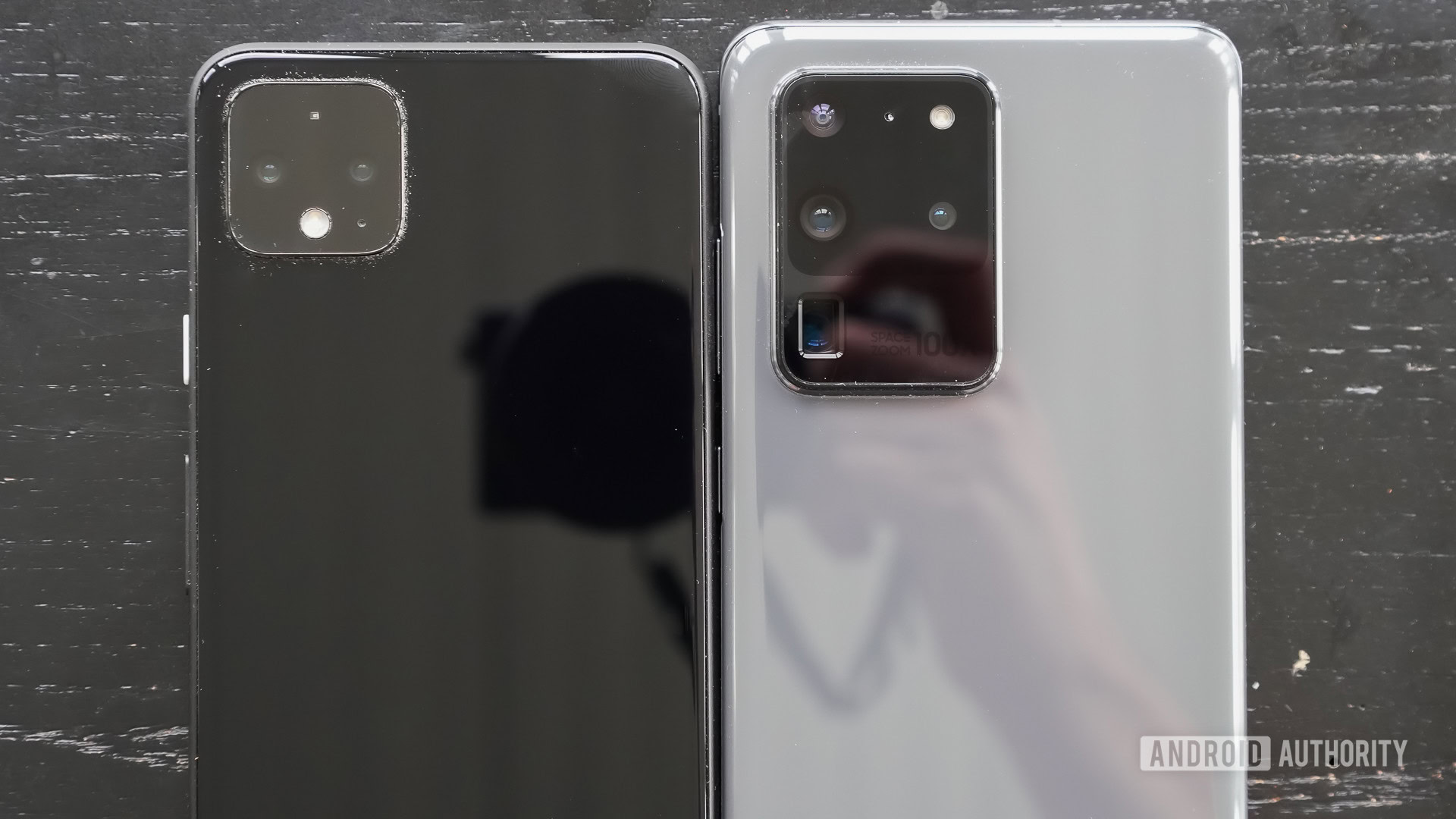Affiliate links on Android Authority may earn us a commission. Learn more.
Camera shootout: Samsung Galaxy S20 Ultra vs Google Pixel 4 XL
Published onMarch 12, 2020

Google has for the last few years set the bar with respect to imaging quality on smartphones. Its Pixel phones have all been solid shooters and the Pixel 4 XL is no exception. Samsung also puts top-tier cameras in its phones. The new Galaxy S20 Ultra is a powerful addition to its roster. Naturally, a Galaxy S20 Ultra vs Pixel 4 XL comparison is order to see which is the superior smartphone shooter.
Read: Samsung Galaxy S20 Buyers Guide – Everything You Need to Know
Galaxy S20 Ultra vs Pixel 4 XL: Specs
Let’s start with the hardware. Both phones have fairly complex systems on board, with multiple cameras working in coordination to produce photos.
The Galaxy S20 Ultra’s main shooter captures 108MP at f/1.8. Of note: it has a really large 1/1.33 sensor, which lets it capture a lot of light. This is what powers its nighttime features. Shots taken with this camera are binned down by a factor of nine (nona-binning) to 12MP each, but the full resolution is available with the press of a button. The telephoto camera snaps 48MP shots at f/3.5, the ultra-wide snaps 12MP shots at f/2.2, and the selfie camera snaps 40MP shots (binned to 10MP) at f/2.2. That’s a lot of sensors and lenses.

Google took a simpler approach with its Pixel 4 XL. Previous Pixel phones relied on a single lens for all the photography work. The 4 series is the first to jump to two cameras. The main imager has a 12.2MP sensor at f/1.7 while the 2x telephoto camera has 16MP sensor at f/2.4. The selfie camera has an 8.1MP sensor at f/2.0. There are no ultra-wide nor depth-of-field sensors on board.
Something worth noting is that the phones are powered by different processors. Where the S20 Ultra has the latest Snapdragon 865 from Qualcomm, the Pixel 4 XL has the 2019-era Snapdragon 855 under the hood. The 865 provides more pixel processing power thanks to its upgraded image signal processor and number-crunching CPU. Unfortunately, it’s hard to quantify exactly how this difference plays out in the real world.

Looking at these components it might be easy to think Samsung already has Google beat, but there’s oh so much more to photography than the raw silicon.
See: Samsung Galaxy S20 Ultra review | Google Pixel 4 XL review
Apps and features
Specs are what power the software features we use to fire off snapshots. How are the camera apps from Samsung and Google?
Both Samsung and Google have usable camera apps that make it easy to find and use features. A double-press of the power button launches the camera app of the S20 Ultra and Pixel 4 XL in a blink. This is always the fastest way to get to the camera.
Samsung has simplified its camera UI recently in One UI 2.0. The shutter button is located prominently, with camera modes and zoom tools nearby. I like that Samsung makes certain controls (flash, timer, aspect ratio, etc.) a breeze to adjust with a few quick taps. Shooting modes include photo, video, Single Take, pro, panorama, food, night, live focus (portrait), live focus video, pro video, super slow-mo, slow-mo, and hyperlapse.
The most significant mode is Single Take, which records up to 10 seconds of video and then automatically generates up to nine different photo/video file types for sharing.
Google’s camera app has always been among the most simple. The basic shooting tools are nearly identical to those of Samsung’s. The shutter button is simple to locate, and you can slide between the various modes with but a flick of the finger. With Google’s app, you have to tap an arrow to reach the secondary controls for the flash, timer, aspect ratio, and such. It’s one more step than is required on the S20. The Pixel 4 XL’s modes include photo, video, portrait, night sight, panorama, photo sphere, slow-mo, time-lapse, playground (AR), and Google Lens.
Night Sight is Google’s master stroke. It essentially allows the Pixel 4 XL to see in the dark. It’s quite something.
Generally speaking, the S20 Ultra offers more raw features than the Pixel 4 XL, but that doesn’t necessarily mean it takes better pictures.
Note: All the sample photos in our article have been resized for display purposes. Full-resolution samples are available here.
Daylight
This is a tough shot: a white bike against a tan surface in direct sunlight. If you ask me, the Samsung shot has small areas that are blown out in the fenders, but it’s not otherwise overexposed. The Pixel did a slightly better job in terms of exposure and white balance.
Here are a few more samples taken around noon, showing lots of shadow and contrast. The Pixel shots are simply more accurate to the scene, and also offer just a touch more detail.
Winner: Pixel 4 XL
Detail
There are a lot of lines and small things in these photos, and most of them are visible thanks to sharp focus. When you zoom in really close, the S20 Ultra shows just a bit more detail than the Pixel 4 XL does, likely thanks to its crazy binned 108MP sensor.
Winner: S20 Ultra
Portrait / selfie
Both phones did a good job with bokeh here. The edges of the tree are perfectly sharp, while the background blur isn’t overaggressive. Samsung’s phone wasn’t able to capture as much clear detail in the bark of the tree, while the Google phone did. Either way, both shots are good and I don’t think there’s a clear winner.
Actual portraits show more clear-cut results. Despite the slight issue with my hair in the Pixel 4 selfie shot, I think the Pixel captured more natural-looking portrait/selfie shots when compared to the S20 Ultra, which skewed white balance a bit too warm. Also, the S20 tends to over-soften faces. I look more like me in the shots on the right.
Winner: Pixel 4 XL
Color
These photos are nearly identical. I shot these because they offered bright colors in the sun (top) and muted colors in the shade (bottom). Both the S20 Ultra and the Pixel 4 XL did a fine job of keeping the color bright in the sun without overexposing it. The shaded pictures are practically perfect, meaning what you see in the photos is exactly what my eyes saw in real life.
Winner: Tie
HDR
Here the Pixel does a better job both with exposure and white balance. You can see more detail in the shaded bridge underbelly in the Pixel shot, and the overall scene is less yellow than in the S20 shot. Either way, these are both good pictures though you may notice a trend with the S20’s photos at this point (hint: it starts with “y” and ends with “ellow”.)
Winner: Pixel 4 XL
Low Light
Here are two nighttime shots of illuminated buildings. The S20 Ultra does a slightly better job. It captures just a bit more light than the Pixel and this leads to sharper, more visible photos. I do wish more of the background were visible in these shots. Surprisingly, the S20 delivers better white balance this time around.
Winner: S20 Ultra
Zoom
Let’s talk about zoom for just a second. The S20 Ultra’s whole pitch is unbelievable levels of zoom. The device has an ultra wide-angle camera that delivers 0.5x zoom, in addition to offering 1x, 2x, 4x, 5x, 10x, 30x, and, yes, even 100x zoom. Samsung’s S20 Ultra does this by blending its up-to-4x optical zoom telephoto lens with digital cropping of the 48MP sensor to reach the 100x claim. You can see in the samples below just how effective this really is.
Let’s not forget Google. The Pixel 4 XL is the first Pixel to include a second lens on the rear and, rather than go with an ultra-wide, Google opted for a telephoto. It is using a blend of optical and digital cropping to also deliver high-quality zoomed shots. Here are the results.
The results are fairly even between the two up to 5x zoom. Google’s Pixel 4 maxes out at a factor of 8x zoom and it’s starting to look a little shaky. The 10x zoom on the S20 Ultra is surprisingly usable, but the 30x and 100x zoom are clearly worthless. Here we have to give the S20 the win because it delivers sharper results out beyond the Pixel 4’s 8x max.
Winner: S20 Ultra
Night mode
It’s not even close. Google’s night mode is far superior in terms of both color and clarity. Both phones took exposures that were about seven seconds long.
Again, we can see that the Pixel is the clear winner, even with the selfie camera.
Winner: Pixel 4 XL
Galaxy S20 Ultra vs Pixel 4 XL: Which wins?

It’s close. It’s really close. But I think in the end we have to hand the win to the Google Pixel 4 XL. Here’s why.
The S20 outperformed the Pixel 4 in low-light, detail, and zoom, where the Pixel bested the S20 in selfies, portraits, night mode, and HDR. Given how often people take pictures of one another, however, I think it’s important to give the Pixel 4 kudos for delivering more natural-looking photos of people. The S20 overdoes the face smoothing and this leads to results that look faked.
It wasn’t easy, and you may feel differently based on the samples above, but I feel good about allowing Google to hold onto its mobile photography crown a bit longer.
Winner: Google Pixel 4 XL
This concludes our Samsung Galaxy S20 vs Google Pixel 4 XL camera shoot-out. Be sure to let us know what you think in the comments below.